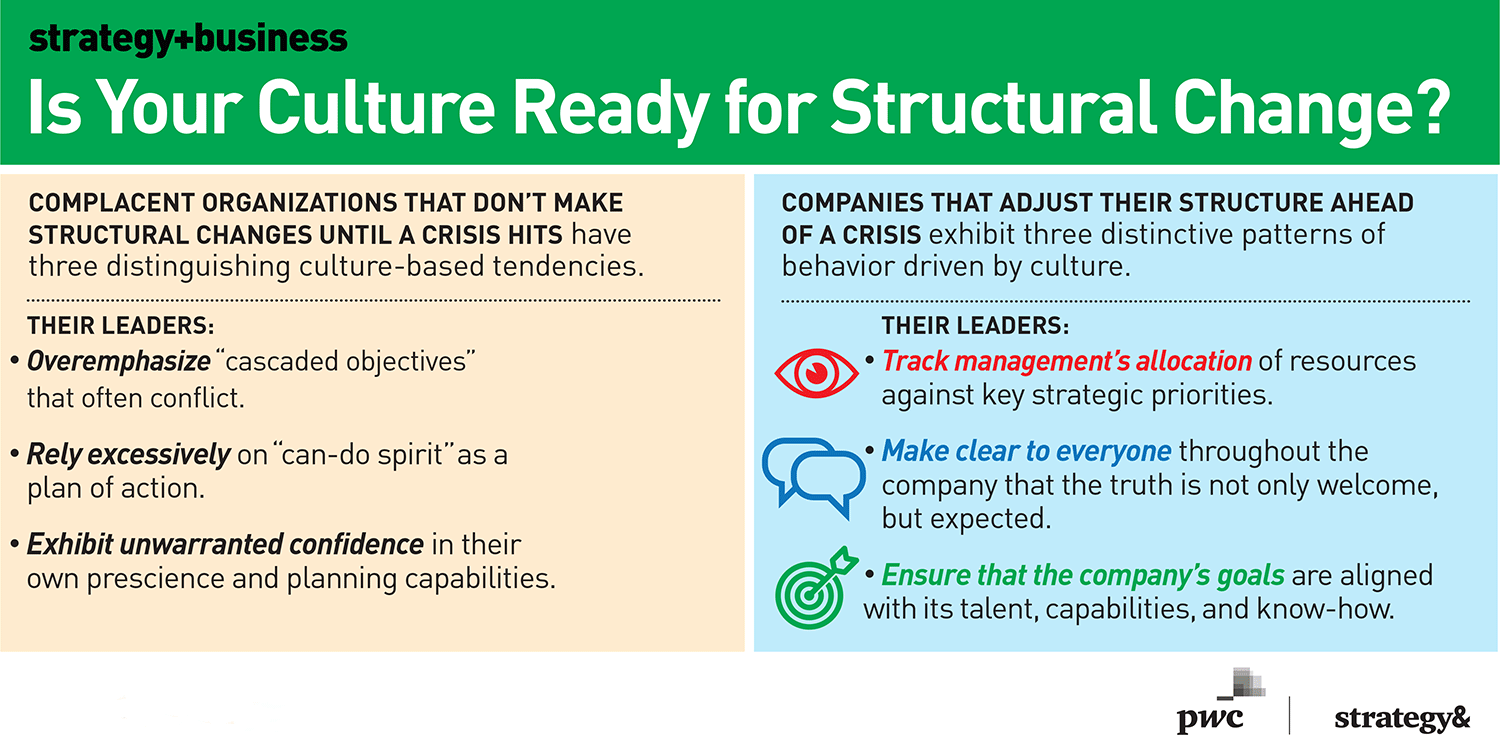The Insurance Industry Needs an Intervention
To compete amid myriad disruptions, insurers in all sectors must wed strategy to structural changes.
Leaders in the insurance industry, like many other industry executives, are seeking routes to profitable growth amid unprecedented economic, financial, and regulatory change. No longer can companies pursue top-line growth for its own sake without adverse consequences or rely on cost cuts alone to boost margins. Today, companies must strike a strategic balance that will sustain profit growth and shareholder returns over the long term.
This is no easy trick, as tectonic forces unsettle the insurance industry — which is accustomed to measuring the pace of change in decades, not years or quarters. A business-as-usual approach falters in the face of quickly shifting customer needs, rising capital requirements, new regulatory burdens, low interest rates, disruptive technology, and new competitors.
Many companies aren’t getting the results they need from textbook moves such as fine-tuning marketing programs, updating products, enhancing customer-service systems, or beefing up information technology. That’s because traditional operating levers for executing strategy simply weren’t designed for the challenges confronting insurers today. Strategic success now requires something more: a structural response. A company can’t adapt to 21st-century conditions without modernizing its 20th-century structures.
The key is for companies to realize that strategy equals structure. Strategy — the big and important ways that a company chooses to compete — must naturally and intrinsically weave in key operating model dimensions including legal entity, tax positioning, capital deployment, organization, and governance.
Finally, once strategy and structure are wed, companies must recognize the role of culture in making new structures work, and use their cultural strengths to promote the changes and ensure that they have staying power. Here’s how.
Responding to the Pressures
Rapid evolutionary change has rendered time-honored organizational structures ineffectual or obsolete in many cases. Before attempting to execute new strategies, insurance companies need to reevaluate every dimension of their operating model.
Structural inadequacies take many forms. Some companies lack the scale needed to generate profitable growth under new capital requirements. Others with siloed, hierarchical organizations lack the flexibility to respond quickly to market shifts. Poor technological capabilities often hamstring old-line insurers facing new digitally oriented rivals. And tax reform and regulation looms as a potential threat to profitability in certain business lines.
In our work with insurers, we at Strategy&, PwC’s strategy consulting business, have seen certain common responses to these pressures. Their responses divide these companies into three groups.
• The first group of companies have anticipated the effects of marketplace trends and made appropriate structural adjustments, clearing the way to profitable growth. For example, life insurer MetLife avoided costly regulatory mandates by selling registered broker distribution to MassMutual and spinning off its Brighthouse retail operations. Others, including Manulife and Sun Life, have made substantial acquisitions to consolidate scale positions.
• The second group of companies have recognized the need for structural change, but have yet to carry it out. With plans made, or under discussion, these companies are waiting opportunistically for the right deal to come along.
• A third group of companies, however, have hunkered down behind existing structures, making only minor tweaks, and hoping to emerge from the storm without too much damage. For some, this is a rational choice because of constraints that leave them with little or no maneuvering room. In other cases, action is impeded by a company culture that reflexively rejects certain options.
Companies in the first two groups are giving themselves a chance to win. But the response of companies in the third group smacks of self-delusion in an age when strategy equals structure.
Time for Real Change
Without a doubt, many insurers work diligently and continually to improve their businesses across dimensions. They gather insights into consumer needs and behaviors, nurture unique capabilities to differentiate themselves from competitors, modernize products, update distribution strategies, and embrace digitization in all its forms. These are all sound approaches, but they’re inadequate in addressing the unknown facing insurers today. Their belief that they will persist assumes a certain stability in underlying economic and market conditions that hasn’t been seen since the financial collapse nearly a decade ago.
As tectonic forces unsettle the insurance industry, balancing growth and profitability is no easy trick.
Forces unleashed by that crash and its aftermath undermined the pillars of many insurance business models. We’ve seen years of only modest growth, with property/casualty insurers expanding at a 3 percent pace, and life insurers barely exceeding 1 percent.
The long stretch of sluggish global growth has put pressure on revenues and forced insurers to compete harder on price. Near-zero-percent interest rates that have prevailed since the Great Recession are squeezing profit margins, especially in life insurance. On the regulatory front, tougher accounting rules are driving up costs while heavier capital requirements weigh down balance sheets and dilute returns.
Compounding these challenges are the potentially destabilizing effects of tax reform on earnings and growth. Taxes may actually rise for some insurers, an outcome that could force them to raise prices or find other ways to protect shareholder returns. In many cases, the benefits of falling tax rates may be diminished by the loss of deductions for affiliate premiums, limits on deductibility of life reserves, accelerated earnings recognition, and a slowdown of deferred acquisition cost deductions.
Competitive dynamics are shifting, too, as expanding “pure play” asset managers such as Vanguard and Fidelity block growth avenues for insurers. Established companies and some new entrants are innovating and experimenting with disruptive distribution models. Others, including private equity firms, are looking to bend the cost curve through aggressive acquisition and sourcing strategies.
To be sure, some long-term trends could benefit certain insurers, or at least improve their risk profile. Longer life spans and the shift of responsibility for retirement funding to individuals may drive demand for annuities and other retirement products.
However, many companies are as unprepared to capitalize on these opportunities as they are to meet long-term challenges. Often the problem comes down to scale. Some insurers lack the resources to build new distribution platforms and customer service capabilities in growing markets such as asset management, group insurance, ancillary benefits, and retirement plans. Although offering an individual product may be relatively easy for new market entrants, the difficulty and cost of establishing such platforms creates a desire for scale and increases pressure on smaller competitors.
Sometimes, the issue isn’t scale but a failure to respond quickly enough as conditions change. Buying habits are changing as consumers — particularly, but not exclusively, the younger cohorts — make more purchases online. Yet our research indicates that people still want some personal assistance with larger and more-complex transactions.
It takes investment and experimentation to find and refine the right business model for new marketplace realities. But some companies haven’t built the necessary assets and capabilities or adjusted to evolving distribution patterns and consumer behaviors.
The proper response to each challenge and opportunity will be different for every company, depending on its unique characteristics and circumstances. In virtually every case, the right solution will involve structural change.
Joining Strategy and Structure
As companies recognize that traditional approaches to annual planning, project funding, and technology architecture may be hindering innovation and real-time responses to changing market conditions, many are rethinking and redesigning their core processes in order to facilitate change. Recent transactions in the sector show the range of structural options for companies that want to advance strategic goals in a changing marketplace. Below are some examples.
Exiting businesses. Sometimes, the best choice is to move out of harm’s way; companies can preserve margins by exiting businesses targeted for higher capital requirements or costly new accounting standards. MetLife’s Brighthouse spin-off bolstered its case for relief from designation as a “systemically important financial institution,” and the associated capital requirements. Exiting U.S. retail life insurance markets also enabled MetLife to focus on faster-growing businesses that are less vulnerable to rock-bottom interest rates. The Hartford recently announced the sale of Talcott Resolution to a group of investors, completing its exit from the life and annuity business.
Partnerships and acquisitions. When scale is an issue, the solution may lie outside the company or in new structural approaches. Some insurers form partnerships to expand distribution, diversify product portfolios, or bolster capabilities. Companies also adjust their scale and capital structures through mergers, acquisitions, and divestitures. Sun Life paid US$975 million in 2016 for Assurant’s employee benefits business, filling gaps in its product portfolio and gaining scale to compete with larger rivals. MassMutual’s purchase of MetLife’s broker–dealer network in 2016 enlarged the MassMutual brokerage force by 70 percent, and freed MetLife to pursue new distribution channels.
Expanding into new lines and geographies. New product lines offer another path to faster growth or fatter profit margins. Several insurers have moved into expanding markets with lower capital requirements, such as asset management. Voya, Sun Life, and MassMutual have acquired or established third-party asset management units to capitalize on investment expertise they developed managing internal portfolios. The Hartford recently agreed to acquire Aetna’s U.S. group life and disability business, deepening and enhancing its group benefits distribution capabilities and accelerating digital technology plans. We also see companies establishing technology-focused subsidiaries such as Reinsurance Group of America’s (RGA’s) RGAx and AIG’s Blackboard.
Cutting costs. Some companies have moved aggressively to improve their cost structure. Insurers seeking greater financial flexibility have divested assets that require significant capital reserves. Aegon unleashed $700 million in capital by selling blocks of run-off annuity business to Wilton Re in 2017. An insurer that offloads its defined-benefit plan to another via pension-risk transfer frees up capital and eliminates ongoing pension funding requirements. Other cost-saving moves focus on workforce expenses. In addition to rightsizing staff, such measures include relocating workers to low-cost areas or jurisdictions offering significant tax incentives. Prudential and Manulife slashed expenses by establishing overseas operating centers that take advantage of labor cost arbitrage, create global economies of scale, and reduce taxes.
Transformation and Culture
Once companies have launched ambitious structural initiatives, they don’t always recognize the role of culture in making the new structures work. But this is a mistake.
Culture is a pattern of behaviors, norms, and mind-sets that have grown up around existing organizational structures; the two (culture and structure) are tightly linked, and you can’t change one without affecting the other. No culture is all good or all bad. But certain cultural traits are more relevant to structural change than others.
Cultural attributes affect a company’s ability to make necessary changes. A company that is consensus-driven and focused on preventing problems before they arise may be indecisive and slow to act. These traits may cause it to wait too long, and miss the optimal moment for a structural transformation. Other companies, by contrast, have a tradition of quickly seizing opportunities. When this trait is supported by other important characteristics — more single points of accountability, strong leadership, and an aligned senior management team — it can foster the rapid decision making essential to structural change.
Culture also comes into play after executives decide to initiate structural change. Most employees have strong emotional connections to the culture — this source of pride, along with a clear and inspiring vision of the future, can motivate them to line up behind the change and can inspire collaboration across organizational boundaries to drive the transformation. Leaders at all levels can generate momentum by signaling the desired cultural shifts and embodying the new behaviors needed to execute structural change.
A new structure without a corresponding evolution of culture amounts to little more than a redesigned organization chart. Culture makes or breaks the new structure, influencing factors as diverse as resource allocation, governance, and the ability to follow through on a vow to “change how work gets done.” It’s not uncommon for a company to expend tremendous effort and resources on a complete structural overhaul, only to see incompatible cultural norms thwart its strategic execution. For example, a new, streamlined operating model intended to accelerate decision making and foster cross-functional collaboration won’t take root in a culture that exalts hierarchy and encourages employees to focus on narrow functional priorities.
Culture also influences a company’s willingness to make the deep structural changes in time to avert a crisis. Those who wait until market conditions have undermined their operating model put themselves at a disadvantage. Nevertheless, few companies attempt structural change in “peacetime.”
Absent a crisis, cultural expectations often limit directors to a narrow role monitoring indicators such as growth and profitability, while management concentrates on achieving specific strategic objectives. Under this traditional allocation of responsibilities, emerging structural issues may not get enough attention. Successful companies, by contrast, continually reassess their structure in light of evolving market conditions. They understand that organizational structures aren’t permanent fixtures, but strategic choices to be reconsidered as circumstances and objectives change.
Capitalizing on Changes
Amid the confusion of today’s insurance industry, one thing is clear: Business as usual won’t deliver sustained, profitable growth. As powerful forces reshape markets, conventional tools for executing strategy are losing their effectiveness. Today’s challenges are not operational, but structural. Many insurers lack the scale, capabilities, or efficiency to compete effectively as competition intensifies, regulatory burdens increase, and financial pressures rise.
Winning companies are meeting structural challenges with structural solutions. Approaches vary from company to company. Some add scale or enhance capabilities, whereas others streamline cost structures or exit lagging business lines. With the right cultural support, these structural responses position a company to capitalize on industry changes that are confounding competitors.
Author profiles:
- Bruce Brodie is a leading practitioner at Strategy&, PwC’s strategy consulting business. Based in New York, he is a managing director with PwC US, helping insurance companies grow through technology, operations, and expense management strategies.
- Rutger von Post is a specialist in organizations and people with Strategy& and a principal with PwC US. Based in New York, he is head of the Katzenbach Center in North America.
- Michael Mariani is a recognized innovator for Strategy&. He is a principal with PwC US and is based in Boston. He serves clients in the insurance sector, helping them better define and execute their strategies.




